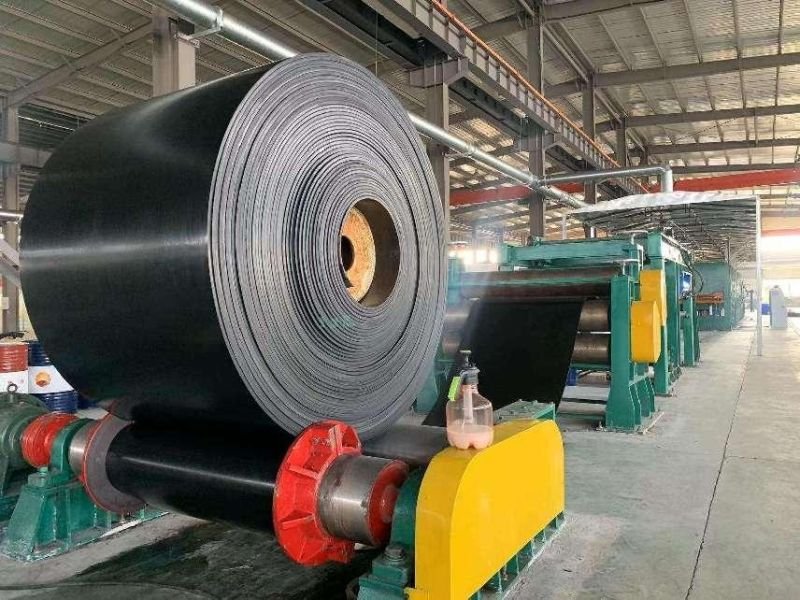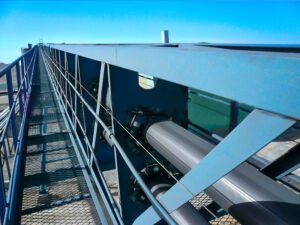In-Depth Guide to Conveyor Belt Cover Selection
Introduction
The selection of cover rubber for conveyor belts is critical for ensuring optimal performance, durability, and safety. This guide delves into the specifics of cover grades, providing a comprehensive understanding of their applications and benefits.
Detailed Overview of Cover Grades
- General Purpose Grades (M, N)
- Suitable for most industries with moderate conveying requirements.
- Provides good resistance to abrasion and minor impacts.
- Abrasion-Resistant Grades (A, X, Y, Z)
- Ideal for environments with sharp, abrasive materials.
- Offers enhanced resistance to wear and tear, prolonging belt life.
- Heat-Resistant Grades (T1 to T5)
- Designed to withstand high temperatures, preventing belt degradation.
- Each grade corresponds to a specific temperature range, from 100°C to 300°C.
- Oil-Resistant Grades (OR, MOR, HOR)
- Prevents swelling and deterioration due to oil exposure.
- Essential for industries processing or transporting oily materials.
- Fire-Resistant Grades (K, S)
- Provides critical safety in fire-prone environments.
- Reduces the risk of fire propagation along the conveyor system.
- Chemical-Resistant Grades (C)
- Offers protection against corrosive substances.
- Suitable for chemical processing or exposure to aggressive materials.
Key Selection Factors
- Material Characteristics: Understand the physical and chemical properties of the conveyed material.
- Operational Environment: Assess the temperature, chemical exposure, and fire risks.
- Cost-Efficiency: Consider the balance between upfront costs and potential savings in maintenance and longevity.
Detailed Tables for Cover Grade Selection
Table 1: General Purpose and Abrasion-Resistant Grades
| Grade | Application | Tensile Strength | Abrasion Loss | Recommended Industries |
|---|---|---|---|---|
| M | General Purpose | 18 MPa | 250 mm³ | Logistics, packaging |
| N | General Purpose | 17 MPa | 200 mm³ | Manufacturing, assembly lines |
| A | High Abrasion | 24 MPa | 120 mm³ | Mining, quarrying |
| X | Extreme Abrasion | 25 MPa | 90 mm³ | Recycling, heavy-duty mining |
Table 2: Heat-Resistant Grades
| Grade | Max Temp (°C) | Tensile Strength | Application |
|---|---|---|---|
| T1 | 100 | 14 MPa | Cement manufacturing, baking |
| T2 | 125 | 14 MPa | Steel processing, glass industry |
| T3 | 150 | 14 MPa | Foundries, incineration plants |
| T4 | 180 | 14 MPa | Asphalt production, smelting |
Table 3: Oil and Chemical-Resistant Grades
| Grade | Resistance Level | Application | Tensile Strength | Features |
|---|---|---|---|---|
| OR | Oil Resistant | Food processing, chemical plants | 16 MPa | Prevents swelling and degradation |
| MOR | Moderate Oil | Automotive, recycling | 15 MPa | Suitable for intermittent exposure |
| HOR | High Oil | Oil refineries, tar processing | 17 MPa | For continuous oil exposure |
Conclusion
Selecting the appropriate cover rubber for conveyor belts is crucial for ensuring operational efficiency, safety, and cost-effectiveness. By considering the material characteristics, operational environment, and specific industry requirements, businesses can make informed decisions that optimize the performance and lifespan of their conveyor systems.




